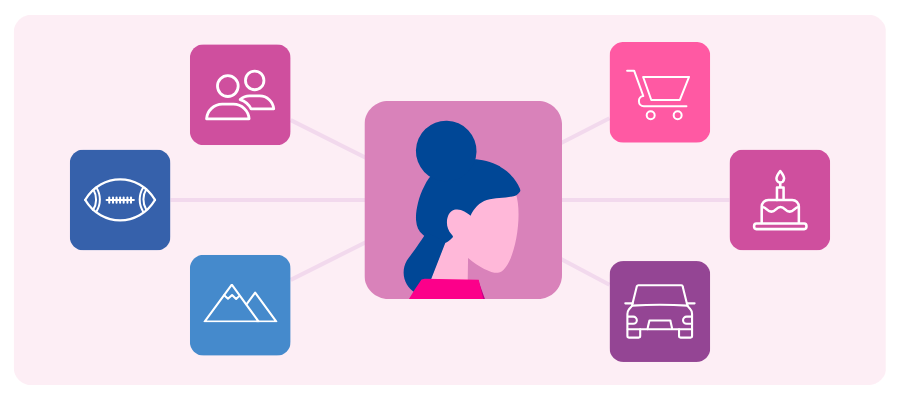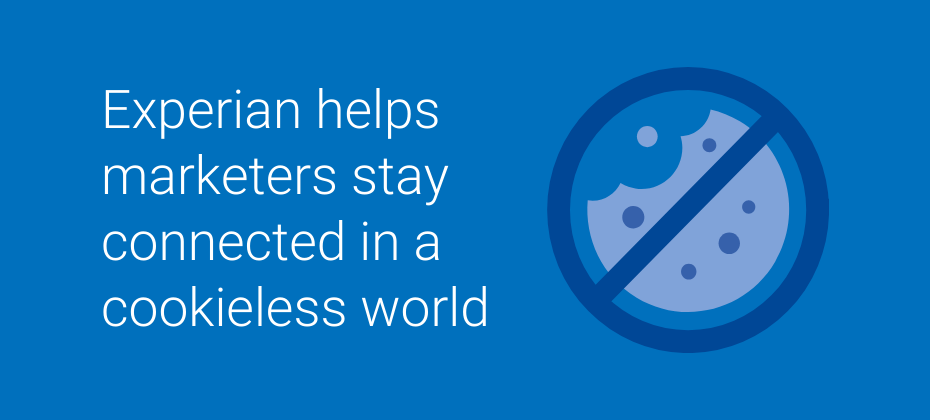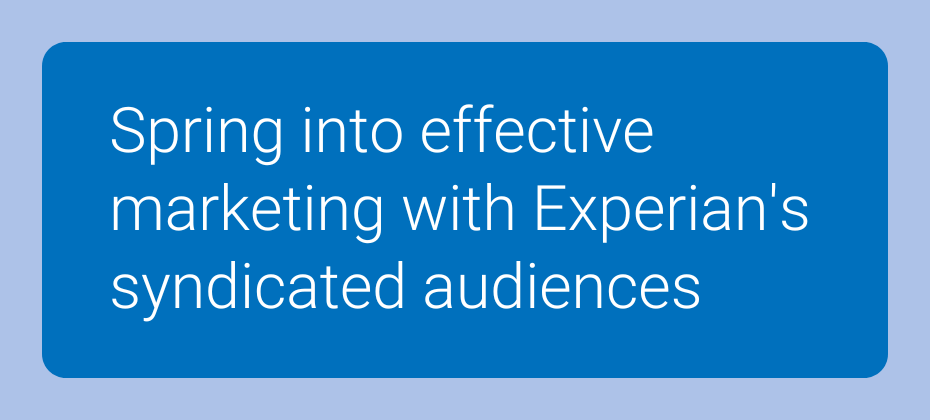At A Glance
Third-party data has moved from a fast-growth, loosely governed environment into one defined by trust, transparency, and compliance. Marketers are now looking for partners with institutional experience and rigorous data standards—not opportunistic providers chasing short-term gains. The brands that win will treat responsible data sourcing as the foundation of their customer strategy.How third-party data has changed and why it matters in 2025
For years, third-party data operated in an expansive, lightly regulated marketplace: fast-moving, high-growth, and filled with players eager to capitalize on digital marketing’s demand for audience insights.
That era is over. Regulatory scrutiny, stricter compliance standards, and rising consumer expectations have already transformed the market. Today, third-party data belongs to partners with proven expertise and built-in compliance. This isn’t a space for opportunistic newcomers; it’s one that rewards long-term commitment and trust.
Even the rapid rise of retail media networks (RMNs) reflects this shift. These platforms are built on long-standing, trusted relationships between brands, retailers, and data partners, utilizing that foundation in new ways to reach audiences responsibly and effectively.
The best providers have already made this transition; those still “shifting” are catching up.
From growth to governance: A market defined by accountability
The third-party data ecosystem has matured. After years of rapid expansion and recalibration, the market has stabilized around a new standard: data quality and regulatory accountability.
Third-party data enriches first-party insights with attributes such as income, gender, and interests that round out the customer view. But when the industry grew unchecked, unreliable providers diluted quality and trust. This resulted in a decline in the overall value and reliability of the third-party data marketplace.

That breakdown led directly to today’s privacy laws, now active across more than 20 U.S. states and numerous countries worldwide. These regulations reflect a permanent consumer expectation: relevance delivered responsibly. Consumers aren’t rejecting personalization; they’re rejecting how it’s been done in the past. They still want relevant, tailored experiences, but they expect brands to deliver them through ethical, transparent data practices.
Does third-party data still matter in a privacy-first era?
Third-party data isn’t disappearing, if anything, it’s become more important. Brands will always need additional insight to deepen customer understanding; first-party data alone only reflects what’s already known.
The industry has entered a mature phase where data quality and compliance are table stakes. The companies leading today built their data infrastructure on rigorous standards, regulatory foresight, and transparent governance.
That same foundation powers the next wave of innovation, including the explosive growth of RMNs. RMNs rely on responsibly sourced third-party data to enrich shopper insights, validate audiences, and extend addressability beyond their own walls. Trusted data partners make that expansion possible, connecting retail environments with broader media ecosystems while maintaining privacy and accuracy.
High-quality, compliant third-party data remains essential because it:
Advancements in AI and machine learning are reshaping how this data is used across the ecosystem. What was once primarily a buy-side tactic is now expanding into the sell-side, where publishers and platforms are using data to curate, package, and activate audiences more intelligently. As AI enhances modeling accuracy and automation, third-party data will play an even greater role in connecting brands and consumers in more meaningful, privacy-conscious ways.
The bottom line: it’s not about having more data; it’s about having better, verified data you can trust.
How can you spot a trustworthy data partner?
The strongest third-party data partners demonstrate accountability through experience, infrastructure, and integrity.
Look for providers that:
Why the future of third-party data depends on accountability
The third-party data industry has already crossed the threshold from expansion to accountability. The companies leading this era have established their credibility through governance and proof. The future belongs to providers that:
- Build with regulatory foresight
- Maintain rigorous quality assurance
- Prioritize partnership over profit
The Wild West days are long gone. The third-party data ecosystem is now defined by stability, transparency, and shared responsibility.
Partner with Experian for data you can trust and results you can prove
When accuracy and accountability define success, you need a partner built on both. Work with the company that’s setting the standard for responsible data-driven marketing and helping brands connect with people in meaningful, measurable ways.
Get started
About the author

Jeremy Meade
VP, Marketing Data Product & Operations, Experian
Jeremy Meade is VP, Marketing Data Product & Operations at Experian Marketing Services. With over 15 years of experience in marketing data, Jeremy has consistently led data product, engineering, and analytics functions. He has also played a pivotal role in spearheading the implementation of policies and procedures to ensure compliance with state privacy regulations at two industry-leading companies.
Third-party data FAQs
Third-party data is information collected by organizations that don’t have a direct relationship with the consumer. It supplements first-party data by adding demographic, behavioral, and interest-based insights.
Privacy regulations are reshaping data practices because consumers expect control over how their information is used. That expectation led directly to today’s privacy laws, now active across more than 20 U.S. states and numerous countries worldwide. These regulations reflect a permanent consumer expectation: relevance delivered responsibly. Consumers aren’t rejecting personalization; they’re rejecting how it’s been done in the past. They still want relevant, tailored experiences, but they expect brands to deliver them through ethical, transparent data practices. Laws like the CCPA and state-level privacy acts enforce this expectation, holding brands and data providers accountable for the ethical use of data.
Yes, brands can still use third-party data safely when sourced responsibly. Partnering with established, compliant providers like Experian ensures both legal protection and data accuracy.
Experian adheres to a set of global data principles designed to ensure ethical practices and consumer protection across all our operations. At Experian, privacy and compliance have long been built in. Every partner and audience goes through Experian’s rigorous review process to meet federal, state, and local consumer privacy laws. Decades of experience have shaped processes that emphasize risk mitigation, transparency, and accountability. Experian’s relationships with demand-side platforms (DSPs), supply-side platforms (SSPs), and even social platforms like Meta, ensures we are aware of any platform-specific initiatives that may impact audience targeting. We’re also active participants in many trade groups to ensure that the industry puts ethical data practices in place to ensure consumers still receive personalized experiences but their data usage and collection is opt-in, transparent and handled with their privacy at the center of the transaction.
Marketers should look for transparency, longevity, and evidence of compliance when looking for a data partner. The best partners can clearly explain how their data is sourced, validated, and maintained. Read Experian’s guide on how you can swipe right on the perfect data partner here.
Latest posts

The marketing world has been preparing for years for the end of third-party cookies, and the news has shifted again. In 2025, Google paused its plan to phase out third-party cookies in Chrome, opting instead to introduce new privacy controls that let users manage how their data is shared. Even with this change, one truth remains: privacy-first; identity-driven marketing is no longer optional. For marketers, it’s about moving beyond reliance on cookies toward durable strategies built on trust, consent, and connected data. What is cookie deprecation? Cookie deprecation refers to browsers ending support for third-party cookies, which have long allowed advertisers to track user activity across multiple websites. These cookies were the foundation of behavioral targeting and attribution. By contrast, first-party cookies, created by a brand’s own website, will continue to function. They store essential information like logins or preferences and are central to modern data collection strategies. The change aims to improve privacy and transparency, giving users more control over their information. For marketers, it represents a shift from broad tracking to consented, identity-based engagement. Experian’s view: While third-party cookies may linger longer than expected, identity should remain the cornerstone of every marketing strategy. Why is cookie deprecation reshaping the industry? The shift toward privacy-first marketing didn’t begin with Google, but Chrome’s decision to limit third-party cookies has amplified the impact. Safari and Firefox removed third-party tracking years ago, but Chrome’s dominance, with roughly 65 percent of the global browser market, makes its shift a defining moment for advertisers. Apple App Tracking Transparency (ATT): Requires user permission before app tracking. Global Privacy Control (GPC): Lets users signal how their data can be shared. General Data Protection Regulation (GDPR) and California Consumer Privacy Act (CCPA): Enforce consent and transparency in data use. Google Tracking Protection: Now limits cross-site tracking for 1 percent of Chrome users, about 30 million people, before a full rollout. The platform response Google’s Privacy Sandbox initiative and new user privacy control interface aim to balance personalization with user protection. These updates mark a shift toward data transparency rather than full deprecation. Experian supports this evolution by helping marketers adapt through privacy-led identity, data collaboration, and measurement solutions that meet compliance standards while maintaining addressability and performance across channels. How will cookie deprecation affect marketers? Marketers will notice several shifts: Less cross-site visibility: Without third-party cookies, connecting behavior across websites becomes difficult, making it harder to attribute conversions. Greater dependence on first-party data: Data collected directly from consumers (emails, preferences, purchase history) will be crucial for targeting and measurement. Increased adoption of alternative IDs: Solutions like Experian’s alternative IDs help maintain addressability and measurement in a cookieless world. Renewed focus on contextual advertising: Relevance now depends on where an ad appears rather than who sees it. New compliance expectations: Marketers must prove transparency and respect for consent under tightening global privacy laws. What challenges should marketers expect with cookie deprecation? Marketers face both operational and strategic hurdles as third-party cookies lose value. Addressability and targeting gaps Without universal identifiers, reaching audiences across channels becomes fragmented. Advertisers must unify data from CRM systems, mobile apps, and offline touchpoints to maintain reach. Measurement and attribution complexity As cookies disappear, so do last-click and view-through models. Solutions must rely on first-party data and probabilistic modeling to evaluate performance. Privacy and consent management Data collection now requires clear opt-ins, user control interfaces, and secure consent management systems that align with IAB standards. Resource and skill constraints Testing new identity and data solutions can be costly. Smaller teams may struggle to integrate clean rooms, universal IDs, or new reporting APIs. Experian’s role: Experian supports marketers through this transition with privacy-compliant data infrastructure, identity graphs, and measurement tools that work across every major platform. How can marketers adapt to a cookieless future? Cookies may still exist, but durable identity strategies are the future of digital marketing. Here’s how to prepare: Use first-party data: Collect information directly from your customers through loyalty programs, preference centers, and interactive content. Invest in analytics that translate this data into insight. Establish a trusted identity foundation: Experian’s Digital Graph connects more than 4.2 billion digital identifiers, linking households and devices in privacy-compliant ways. That means marketers can expand their addressable reach and understand audiences without relying on cookies. Experian’s data-collaboration solutions let you combine your first-party data with partner insights securely, unlocking deeper audience understanding. Explore alternative targeting technologies: Contextual methods powered by Experian’s data accuracy ranked #1 by Truthset, help you maintain personalization while respecting privacy. See how Experian’s identity resolution and data collaboration solutions can help you adapt in a cookieless world. What are the best practices for post-cookie marketing? Be transparent: Make consent simple and clear, and show how data adds value. Experian helps brands maintain transparency through privacy-first data solutions built on consented consumer information. Prioritize data quality: High-quality, verified data builds confidence and improves ROI. Experian’s accurate and validated data assets ensure marketers reach real people with relevant messages. Choose the right partners: Work with technology providers like Experian that support privacy regulations and enable interoperability across platforms. Keep the customer experience central: Relevance and respect earn long-term loyalty, values embedded in Experian’s approach to responsible marketing. What does the future look like for advertising without cookies? The end of cookies isn’t the end of personalization. It’s a chance to design advertising that earns consumer trust. Marketers who connect data responsibly and measure real outcomes will outperform those chasing outdated identifiers. Experian already helps global brands build this future through: Consumer Sync identity solution: Enables consistent, privacy-safe engagement across channels. Consumer View data solution: Delivers compliant, data-driven insights to inform data-driven marketing decisions. Digital and Offline Identity Graph: Provides scalable connectivity across digital and offline environments for a unified customer view. Learn how Experian can help you thrive after cookie deprecation Cookie deprecation changes how digital marketing works, but it doesn’t erase the value of data. With Experian’s identity, connectivity, and trust-based solutions, you can continue reaching audiences effectively and measure what matters. Explore how Experian can help you connect confidently in a cookieless world FAQs What is cookie deprecation? Cookie deprecation refers to browsers ending support for third-party cookies, which track users across sites. This shift promotes greater privacy and transparency while encouraging marketers to use first-party and identity-based data for targeting and measurement. Why is Google Chrome phasing out third-party cookies, and what’s changed recently? As of September 2025, Google paused its plan to fully deprecate third-party cookies in Chrome. The company will introduce new user privacy controls that allow individuals to choose how their data is shared, while continuing to test privacy-preserving APIs through its Privacy Sandbox. Which browsers are affected by third-party cookie deprecation? Safari and Firefox already block third-party cookies, and other browsers have adopted similar restrictions. While Chrome’s deprecation is paused, its large user base, more than 60 percent of global traffic, means its future policies will continue to influence how marketers plan and measure campaigns. How should marketers adapt to third-party cookie deprecation? Even with Google’s pause, marketers should keep building privacy-first strategies. Focus on:- Strengthening first-party data through loyalty programs and preference centers.- Using Experian’s Digital Graph to connect audiences across devices and environments.- Activating with Consumer Sync® for consistent, privacy-safe engagement.- Collaborating securely through Experian’s data collaboration solutions, which allow brands to share insights responsibly. Latest posts

As the vibrant colors of spring emerge, so do opportunities for marketers to engage with their audience in fresh and meaningful ways. Crafting effective spring advertising campaigns requires a deep understanding of your target audience. In this blog post, we'll explore five key audience categories, each presenting unique opportunities for impactful spring advertising campaigns. What separates Experian's syndicated audiences Experian’s 2,400+ syndicated audiences are available directly on over 30 leading television, social, programmatic advertising platforms, and directly within Audigent for activation within private marketplaces (PMPs). Reach consumers based on who they are, where they live, and their household makeup. Experian ranked #1 in accuracy by Truthset for key demographic attributes. Access to unique audiences through Experian’s Partner Audiences available on Experian’s data marketplace, within Audigent for activation in PMPs and directly on platforms like DirectTV, Dish, Magnite, OpenAP, and The Trade Desk. Spring cleaning and home improvement Embrace the energy of renewal associated with spring cleaning. Target audiences interested in home improvement and organization with Experian syndicated audiences like "Gardening Mothers" or "Home Improvement & DIY Frequent Spenders." Share tips, hacks, and products that align with the desire for a fresh start, turning mundane chores into exciting opportunities for your brand to shine. Here are 6 audience segments that you can activate to target consumers focused on spring cleaning and home improvements: Purchase Transactions > Household Goods > Frequent Spenders Purchase Predictors > Shoppers All Channels > Home Maintenance and Improvement Purchase Transactions > DIY and Advice Seekers > High Spenders Purchase Transactions > Home Improvement/DIY > High Spenders Retail Shoppers: Purchase Based > Home Improvement & DIY > Hardware & Home Improvement Retail Shoppers: Purchase Based > Shopping Behavior > Big Box and Club Stores: Walmart Frequent Spenders Gardening Spring is the time when consumers are investing in gardening equipment for lawn care. Here are a few audience segments you can activate to target consumers focused on gardening: Retail Shoppers: Purchase Based > Home Improvement & DIY > Garden & Landscaping Stores: Frequent Spenders Lifestyle and Interests (Affinity) > Hobbies > Gardening Lifestyle and Interests (Affinity) > Moms, Parents, Families > Gardening Mothers Purchase Predictors > Shoppers All Channels > Lawn and Garden Movers and new homeowners Did you know? 44% of new homeowners are between the ages of 25-39*. Improve engagement for your spring targeting by pairing our new homeowner audiences with our Demographics > Ages > 25-29, 30-34, and 35-39 syndicated audiences. Here are a few you can activate now: Life Events > New Homeowners > Last 6 Months Life Events > New Movers > Last 12 Months Mother's Day: Unveil the perfect gift Appealing to the emotion of gratitude and love, Mother's Day is a significant occasion for marketers. Activate Experian syndicated audiences such as "Mother's Day Shoppers" and "Florists & Flower Gifts High Spenders" to tailor your spring advertising campaign toward those likely to purchase heartfelt gifts. Share ideas and promotions that resonate with the nurturing and caring spirit of this celebration. Here are 6 audience segments that you can activate to target consumers getting ready to celebrate Mother's Day: Retail Shoppers: Purchase Based > Seasonal > Mothers Day Shoppers Spenders Lifestyle and Interests (Affinity) > Moms, Parents, Families > Mothers with 2+ children Mobile Location Models > Visits > Mothers Day Shoppers Lifestyle and Interests (Affinity) > Moms, Parents, Families > Moms Age 25-54 Mobile Location Models > Visits > Jewelry Retail Stores Retail Shoppers: Purchase Based > Shopping Behavior > Florists & Flower Gifts: High Spenders Father's Day: Celebrate Dads in style Highlighting the significance of paternal bonds, Father's Day is an excellent opportunity to showcase thoughtful gifts and experiences. Engage the "Father's Day Shoppers" or "Growing and Expanding families" with content and products aligned with their interests. Craft a campaign that acknowledges the varied roles fathers play and the unique gifts they would appreciate. Here are 6 audience segments that you can activate to target consumers getting ready to celebrate Father's Day: Retail Shoppers: Purchase Based > Seasonal > Fathers Day Shoppers Spenders Mobile Location Models > Visits > Fathers Day Shoppers Mosaic – Personas – Lifestyle and Interests > Group M: Families in Motion > M45 – Growing and Expanding (Young, working-class families and single parent households that live in small city residences) Geo-Indexed > Demographics > Presence of Children: Ages: 7-9 Lifestyle and Interests (Affinity) > Activities and Entertainment > Home Improvement Spenders Life Events > New Parents > Child Age 0-36 Months Plan for the 2024 TV Upfronts When gearing up for the 2024 upfronts, you can expand your TV planning by incorporating diverse audience categories into your spring advertising campaigns. It's not just about targeting a demographic; it's about captivating your unique audience. Whether it's cord cutters, ad avoiders, avid streamers, or households that watch TV together, understanding and engaging with these distinct segments is paramount. To maximize impact, use comprehensive TV data that goes beyond broad demographics. Here are 6 audience segments that you can activate as part of your TV planning strategy: Retail Shoppers: Purchase Based > Entertainment > Streaming/Video/Audio/CTV/Cable TV: Cable/Broadcast TV: Cord Cutters: Recent Retail Shoppers: Purchase Based > Entertainment > Streaming/Video/Audio/CTV/Cable TV: Streaming Video: High Spenders Television (TV) > Ad Avoiders/Ad Acceptors > Ad Avoiders Television (TV) > TV Enthusiasts > Paid TV High Spenders Television (TV) > Ad Avoiders/Ad Acceptors > Ad Acceptors Television (TV) > Household/Family Viewing > Pay TV/vMVPD Subscribers Households To find consumers who are most likely to engage with your TV ads, you can layer in our TrueTouchTM engagement channel audiences: TrueTouch: Communication Preferences > Engagement Channel Preference > Digital Video TrueTouch: Communication Preferences > Engagement Channel Preference > Streaming TV Summer preparation: Anticipate the fun ahead As spring transitions to summer, help your audience gear up for the upcoming season. Target "Summer break travelers" or "Memorial Day Shoppers" with offerings that align with their summer plans. Whether it's fashion, travel essentials, or outdoor gear, position your brand as an essential companion for their summer adventures. Here are 6 audience segments that you can activate to target consumers getting ready for summer: Mobile Location Models > Visits > Summer Break Travelers Retail Shoppers: Purchase Based > Seasonal > Summer Sales Event Shoppers: Independence Day Shoppers Retail Shoppers: Purchase Based > Travel > Vacation/Leisure Travelers: Summer Trips Mosaic – Personas – Lifestyle and Interests > Group B: Flourishing Families > B09 – Family Fun-tastic (Upscale, middle-aged families with older children that live in suburban areas and lead busy lives focused on their children) Mobile Location Models > Visits > Memorial Day Shoppers Retail Shoppers: Purchase Based > Seasonal > Summer Sales Event Shoppers: High Spenders: Memorial Day Shoppers Did you know? Consumers between the age of 45-49 make up the largest percentage of top apparel shoppers*. Improve engagement for summer apparel shopping targeting by refining your audience with our Demographics > Ages > 45-49 syndicated audience. Spring into effective advertising with Experian’s syndicated audiences For spring advertising campaigns, understanding your audience is the key to success. By activating Experian's syndicated audiences, you can refine your approach and resonate by activating specific segments. Embrace our syndicated audiences so you deliver campaigns that not only capture attention but also build lasting connections with your audience. As you embark on this spring marketing journey, remember – the possibilities are as endless as the blossoming flowers. Connect with our audience team Need a custom audience? Reach out to our audience team and we can help you build and activate an Experian audience on the platform of your choice. Additionally, work with Experian’s network of data providers to build audiences and send to an Audigent PMP for activation. You can activate our syndicated audiences on-the-shelf of most major platforms. For a full list of Experian's syndicated audiences and activation destinations, download our syndicated audiences guide below. Download our syndicated audiences guide Check out other seasonal audiences you can activate today. Take me there Footnote *Experian looked at our demographic and purchase-based data to understand retail trends over the past year. Our demographic and purchase-based data covers credit and debit card usage across 500 top merchants. Latest posts

In this article…What are retail media networks?How important is it to advertise with RMNs?Trends with big RMNsReasons behind these trendsCrafting your RMN ad strategy Digital advertising experienced a transformative shift in 2023, with retail media networks emerging as a focal point for advertisers seeking precision and efficacy. These networks defined how brands connect with consumers, utilizing the unique environment of digital storefronts to deliver targeted and personalized advertisements. Below, we'll discuss the diverse landscape of retail media networks, examples of these platforms, and how Experian is at the forefront of empowering advertisers within this evolving marketing ecosystem. What are retail media networks? A retail media network (RMN) is an advertising platform retailers use in their digital storefronts or online platforms. It lets brands and advertisers promote their products or services directly within the retail environment where consumers make purchasing decisions. Unlike traditional advertising channels, RMNs use the retailer's first-party data to offer targeted and personalized advertising experiences. How important is it to advertise with RMNs? RMNs offer advertisers a unique advantage — a rich set of first-party data on consumers, both on and off the platform. On-platform data includes user engagement insights, demographic information, and behavioral patterns. RMNs offer off-platform first-party data, such as cross-channel integration and CRM data integration. This data is especially important as the industry sees a shift away from the reliance on third-party cookies. One of the key challenges brands face is the lack of tracking abilities through the customer journey. However, the closed-loop measurement and attribution capabilities within RMNs help advertisers track the entire consumer journey, linking campaign spend directly to final sales and in-store purchases. The precision and accountability offered by RMNs make them a crucial strategy in the ever-evolving world of digital advertising. Trends with big RMNs Here is a list of retail media networks and their performance in 2023. The information below offers insights into their reach and effectiveness in driving sales and brand visibility. Amazon According to Pacvue’s Q4 guide, Amazon Media Network experienced a year-over-year decline in its daily spend. However, a notable quarterly increase of 3.2% suggests a recent expansion in this ad type. The current average CPC for Amazon-sponsored products is $1.21, marking a substantial 7.1% year-over-year increase. Return on ad spend (ROAS) showed a 1.5% year-over-year decrease but increased by 6.1% quarter-over-quarter, potentially caused by more efficient campaigns. The beauty category showed a particularly strong performance with a remarkable 69.4% year-over-year increase. Walmart Walmart's advertising revenues are surging at a rate twice that of Amazon, according to the Pacvue Q4 report. This quarter, the Walmart Media Network experienced a substantial 40% boost in ROAS, now at $6.93. This advancement can be attributed to strategic adjustments in the algorithm and bid rules and the incorporation of new bid features. Walmart's CPC also witnessed a noteworthy 18.3% year-over-year decrease and a 14.5% year-over-year surge in average ad spend. Walmart's growth trajectory emphasizes the shift in consumer behavior toward product discovery, as many consumers research products on the website before purchasing. Kroger Kroger developed an advanced retail media network that launched in October 2023. Their platform offers advertisers a more streamlined way to activate, measure, and optimize their campaigns, leading to improved advertising performance. The self-serve advertising platform lets advertisers promote products across the Kroger family of brands. Kroger is the biggest grocery chain in the country with a strong first-party shopper data set, providing more advanced audience targeting than many other grocery RMNs. Target Target launched its retail media network, Roundel, in 2016 to enhance the connection between brands and guests through curated media experiences. Roundel uses Target’s rich insights to create personalized advertising campaigns, reaching guests across several platforms and premium publishers. Over the past two years, Roundel has experienced over 60% growth, delivering over one billion in value for Target in 2021 and 2022. With a team of over 500 members, the platform differentiates itself by offering easy-to-use advertising solutions to brands of all sizes. Target plans to launch Roundel Media Studio, a self-service buying tool, in early 2024. Marriott In partnership with Yahoo, Marriott has created a travel media network that lets advertisers target consumers based on the hotel chain’s guest data. This collaboration allows ads to be strategically placed on various platforms, including the hotel’s websites. Marriott Media Network’s rollout will start on mobile platforms similar to traditional RMNs. Over time, it will extend to include ad placements on TV screens in guest rooms, Wi-Fi portals, and various digital screens in other areas, like lobbies and bars. This innovative approach in the hotel industry offers marketers diverse opportunities to reach their target audience. Nordstrom Nordstrom Media Network has shown considerable success, generating over $40 million in revenue and collaborating with several brand partners. Introduced in 2019, this network initially experimented with off-site campaigns and later expanded to on-site sponsored ads in 2021. Nordstrom Media Network offers data from 32 million customers and digital properties with nearly two billion annual visits. The network’s focus on personalizing the customer experience helps it stand out in the competitive retail media space and makes it a valuable player in the evolving digital advertising landscape. CVS With CVS Media Exchange, advertisers have access to a data set of 74+ million customers. This platform creates tailored campaigns for companies, helping their ads reach customers at the most critical points in their shopping journey. With options like display, video, audio, social, and in-store ad options, advertisers are seeing increases in product purchases and brand awareness. Instacart Instacart has a retail media network through its own platform and a tool called Carrot Ads, which helps grocery store chains develop RMNs through Instacart. It has a network of over 1,400 retail brands, helping advertisers reach their target audience. Advertisers have access to insights and automation to create relevant ads and track their progress. Companies like Sprouts are using Carrot Ads to create and grow their own RMNs. Together, Instacart and Sprouts offer brands a unique opportunity by facilitating targeted online campaigns on Sprouts’ website. This collaboration provides access to metrics like sales and ROAS, offering a comprehensive view of campaign performance. DoorDash DoorDash offers a comprehensive suite of advertising tools for restaurants and brands to expand their reach on the DoorDash marketplace. This flexible advertising platform extends across diverse categories, like restaurants, grocery, convenience, alcohol, and more. The platform has demonstrated success with an average return on ad spend of 4.1x from sponsored product campaigns and an average of 70% new-to-brand customers. Reasons behind these trends The surge in advertising trends within RMNs can be attributed to several critical factors, including the following: Rising retail media competition The competitive landscape within the retail world has intensified, with major players competing for a larger share of the advertising pie within their respective RMNs. This surge in competition among retailers like Lowe’s One Roof, Sprouts, 84.51, and Albertson’s Media Collective has led to a continual evolution of features and capabilities. Advertisers benefit from this competitive spirit because it drives innovation and offers enhanced tools and opportunities to refine their advertising strategies. The competitive edge creates an environment where RMNs continually improve and adapt to meet the needs of both advertisers and consumers. Third-party cookie deprecation Major web browsers are getting rid of third-party cookies, so advertisers must reevaluate their targeting and tracking strategies. Because of this, the first-party stronghold of RMNs is particularly valuable. Advertisers can rely on their reservoir of first-party data with RMNs to maintain effective audience targeting and measurement capabilities. The emphasis on first-party data aligns with advertisers' needs in the post-cookie era, making RMNs crucial partners in the pursuit of effective and privacy-conscious advertising solutions. Crafting your RMN ad strategy Crafting an effective RMN ad strategy is a multifaceted process that involves careful planning. You start with clean, scaled, and scoped data, then everything waterfalls from there. When done correctly, you reach the right audience, your ROAS/ROI results improve, your marketing spend is more effective, and your advertisers want to spend more with your RMN. Here are steps to consider when developing your RMN ad strategy. Choose the best RMN partner for your needs Selecting the right partner is a critical first step. Ensure your partner seamlessly integrates with your existing MarTech stack, avoiding any additional workload for your existing team. A symbiotic relationship with your RMN partner enhances collaboration and streamlines your advertising initiatives. Experian’s comprehensive data and identity solutions can help RMNs maximize their opportunity, with our new solution tailored to enhance RMNs’ strength in first-party shopper data. Experian’s solution helps RMNs unlock expanded customer insights, enriched audiences for activation, identity resolution for cross-channel audience targeting, and real-time measurement and attribution. This comprehensive solution is designed to help RMNs capture more advertising revenue. Our goal is to ensure you capture the most advertising dollars and make your RMN operate at its peak performance. Learn more here Utilize third-party data One of the cornerstones of an effective RMN strategy is the integration of third-party data. This is where Experian steps in as a critical ally. Experian's robust third-party data solutions can enhance an RMN’s first-party data to create more scale and scope for RMN audiences. This, in turn, will open up more opportunities for advertiser investment. Utilize first-party data The main advantage of RMNs is the access to first-party data. Advertisers can use this data to create personalized and targeted campaigns. By tailoring your messages based on consumer expectations, preferences, behaviors, and purchase history, you create a more engaging and relevant ad experience. This not only boosts the effectiveness of your campaigns but also fosters a deeper connection between your brand and the audience. Promote relevant products Personalized ads are crucial for capturing audience attention and driving conversions. With retail media platforms, advertisers can personalize their campaigns to individual shoppers. Promoting products that align with your audience's specific needs and preferences increases the likelihood of conversions. Consider the consumer journey Strategic ad placement within the consumer journey is pivotal. Consider targeting consumers late in the decision-making process when they're in a shopping mindset. Placing ads at this point in the customer journey increases the chance of converting prospects into customers. Understanding the customer journey within an RMN system allows for a more targeted and impactful advertising strategy. Measure data and adapt The final step in the process is continuous measurement and adaptation. Retail media platforms include powerful analytics tools that let advertisers track and analyze ad performance in real time. Use these insights to adapt your strategy. A data-driven approach ensures your campaign remains responsive to the changing marketing dynamics. Elevate your advertising strategy with Experian Transform your advertising strategy with Experian's cutting-edge Consumer View solutions. These advanced tools excel in audience segmentation and easily integrate your first-party data with our comprehensive third-party insights. This ensures the seamless activation of your data across online and offline channels. Experian also has custom audiences and audiences that are available on-the-shelf of most major platforms. This and our onboarding capabilities make Experian the perfect partner for your RMN strategy. Connect with a member of our team today to take the next step in elevating your advertising campaigns. Connect with us Latest posts







